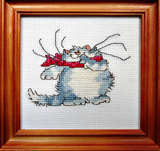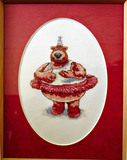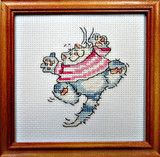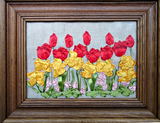Embroidery, The Beautiful Ancient Art
Have you ever walked into a room and just smiled? These whimsical framed embroidery pictures will make you do just that. These cross stitched critters will add a fanciful and colorful piece to any room or decor. The art of cross stitch has no origin that we can trace, it seems to go back to the beginning of civilization. A newer trend, ribbon embroidery, makes beautiful pictures. The framed ribbon picture is gorgeous with it’s bright colors and 3D design.
Our framed embroidery collection
A bit of history
A little bit of thread, a little bit of cloth. For as long as these two items have existed, there has been embroidery. The Japanese, the English, native Americans, just to name a few, are civilizations who have long used embroidery to decorate their homes, clothing, furniture, and ceremonial items. Unfortunately, due to light and insects, the earliest of these fabulous creations have long ago decayed. One may find some embroidery made after 1600 A.D. that has been preserved by churches or a museum.
Collectors of embroidery categorize the early works into two groups. Let’s look at those two groups a little closer.
Stump work
These are very brightly colored designs made to depict different areas of life as it existed in the mid-seventeenth century. It was usually done on white silk, and was sometimes used along with a wooden head, hands and feet to create a three dimensional look. Other times, stump work would adorn a trinket box used to serve tea or hold jewellery, or perhaps the embroidery would be used to decorate a mirror. Embroidery collectors can still find stump work, and it is a treasure to behold.
Samplers
From long ago until the recent past, embroidery was taught to girls in schools as part of their curriculum. Samplers typically are stitched on wool or silk, and brightly colored silk thread was used. Children began showing their knowledge of the alphabet or numbers by stitching them into a sampler. As their experience grew, they stitched scenes such as their schoolhouse, or perhaps scenes of children playing.
While embroidery is not a hard process, it requires much patience. Countless hours are spent to create these amazing works of art. People around the world who collect embroidery understand the time invested in even the simplest designs.





